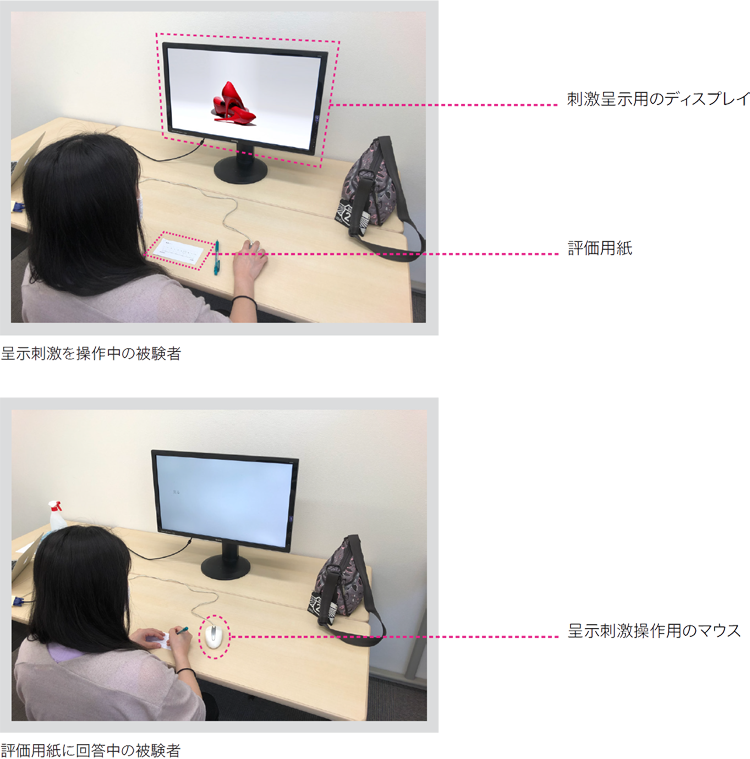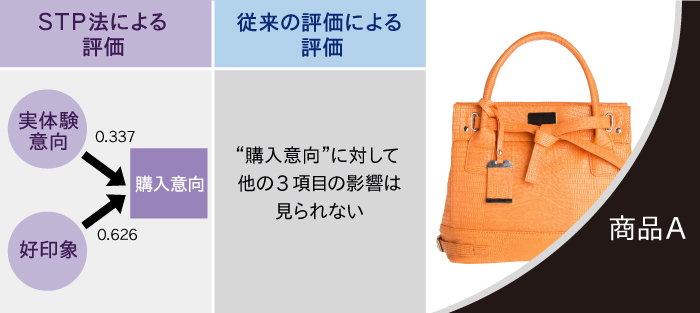Note: This website was automatically translated, so some terms or nuances may not be completely accurate.
What is STP, the new intuitive marketing technique that uncovers true feelings?
Last year, we introduced "Design Psychology," which deals with the unconscious realm of humans (What is Intuitive Marketing Based on Design Psychology? ). There, we discussed methods for quantifying people's moods using image-based experiments and recommending products aligned with those moods.
In 2020, Dentsu Inc. continues its joint project with Professor Haruo Hibino of Chiba University's Faculty of Engineering, who promotes this design psychology, and BBSTONE Design Psychology Laboratory, a venture company originating from Chiba University. This time, we introduce the usefulness of the "STP" method, which pinpoints what feels intuitively good.
First, why focus on intuition?
Has Conventional Research Hit a Ceiling!?
The market is crowded with a staggering number of products. The recent trend of "everything online!" has led to an overwhelming flood of product information even in online shopping spaces. It's truly a "red ocean." This has become even more pronounced since the COVID-19 shock, hasn't it?
Marketing firms rely on survey and interview results to compete fiercely in this brutal landscape. However, from a design psychology perspective, continuing to fight solely with these traditional methods has its limits. Relying only on conventional approaches risks hitting a ceiling, potentially stifling further business growth.
So why the plateau? Three reasons stand out.
The first reason is that "consumers themselves often don't truly understand their own preferences or feelings." Steve Jobs, who brought the iPhone to the world, is said to have remarked, "Consumers don't know what they want." Humans often don't understand their own true feelings, which is why traditional surveys alone don't work well. In fact, it has even been proven that people tend to "retroactively justify" the reasons behind their choices and decisions (a phenomenon known in psychology as Choice Blindness).
The second reason is that survey responses are contaminated by "noise" from the respondent's past experiences and preconceptions. A prime example of this is the unconscious "status quo bias," which makes it difficult for people to switch from the brands they have chosen in the past. As a result, people may give noncommittal answers or even tend to hide their true feelings. This distorts the survey results and ultimately reduces the accuracy of marketing.
The third reason is that human decision-making is largely animalistic and intuitive, and it is necessary to unravel that intuitive part (raw psychology: Donald Norman, discussed later, calls this "gut feeling"). Professor Hibino states, "Humans are irrational beings." Human preferences and choices (what do they like? What gives them a good impression?) are not always determined logically; instinctive factors also have a significant influence. This point will be explained in more detail in the next chapter.
Therefore, in 2020, the team from Dentsu Inc. and Chiba University developed solutions using the "STP" (Short-time Presentation) method, which emphasizes intuitive reactions. We believe that adding this method to existing marketing will lead to innovation and enable a shift from the red ocean to a blue ocean that stands out.
What is STP?
Formally known as Short-time Presentation by DPU, this method was developed by BBSTONE using patented techniques. It involves presenting the subject of interest—such as a product, design, packaging, or advertisement—to participants on a monitor screen for an extremely brief duration (typically around 0.X seconds) and recording their immediate, intuitive evaluation.
...While this may sound simple, the entire experimental program is sophisticated software based on specialized expertise. For example, the exact seconds an image is exposed are precisely determined through experimentation. Furthermore, the obtained data is analyzed using various design psychology techniques, extracting results that delve deep into human psychology.
[Figure 1] STP Experiment Concept

What are the benefits of STP?
So, what specific benefits can be gained from STP?
The first benefit is, quite simply, understanding "designs and expressions that intuitively feel good." Here, we present a specific success story handled by BBSTONE Design Psychology Research Institute.
The product was a certain cosmetics brand.
Generally, women tend to own cosmetics in similar colors. Due to some preconception, they already believe "this color suits me" or "I like this color," meaning their bias from experience or memories is strong, preventing objective evaluation. Consequently, even when sales staff said, "This color looks great on you!" or "This color will bring out your new charm!", customers often remained unconvinced.
BBSTONE addressed this by developing STP, which revealed unspoken, deeply desired needs the customers themselves weren't aware of. This enabled a new service. By surprising customers (recommending colors they wouldn't normally choose) and increasing their level of agreement, it garnered tremendous support and achieved significant sales growth.
Other cases handled by Design Psychology include applying intuitively superior design to cooking oil, resulting in a 30% sales increase, and successfully developing "productivity-enhancing grid lines" (patent pending) that are intuitively easy on the eyes.
Why does STP work so well?
But why does STP allow us to extract intuitive evaluations? I would like to touch briefly on the theory behind this mechanism.
According to research by Donald Norman (Professor Emeritus, University of California, Cognitive Science and Cognitive Engineering) and others, emotional processing begins at the "visceral level" (corresponding to the intuitive level in this article).
When information enters the sensory organs, humans quickly judge likes and dislikes, good and bad, and safety, and send signals to the muscles (motor nerves) to warn the brain and other parts of the body. This is the level of information processing determined at the biological level. Above this "instinctive level" are the "behavioral level" and "introspective level" of information processing, which apply a status quo bias (or noise, so to speak) based on experience and behavior to human psychology. Therefore, emotional processing at the "instinctive level" (intuitive level) is the purest reaction and the closest to genuine information processing.
In conventional surveys and experiments, subjects are allowed to think carefully for a long time, but because of this, personal experiences and preconceptions can influence the experimental results and appear as bias. On the contrary, subjects may even lie to themselves and give noncommittal answers. They may not say what they really think, or rather, they may not even know what they really think in the first place.
Therefore, based on Norman's model, BBSTONE devised STP as a method that enables the extraction of only "pure evaluation" at the intuitive and visceral levels (i.e., uninterrupted by experience bias and preconceptions), just before evaluation infiltrates the behavioral and introspective levels.
Figure 2: How STP (Short Time Presentation) avoids bias

What are the "additional benefits" of STP?
We know that STP provides additional benefits. To put it simply, this "second benefit" is that it allows us to clearly analyze "specific psychological factors that influence the intention to purchase a product" and "the degree of influence of each psychological factor."
What mechanisms are at work in the mind when someone feels inclined to buy a particular brand? Professor Hibino's analysis states that factors influencing purchase intent involve multiple intertwined psychological elements, generated through their interactions. Professor Hibino's following phrase succinctly symbolizes this:
"Humans are not simple."
In fact, applying STP can also reveal such internal structural and causal models underlying purchasing motivation. Regarding this, Dentsu Inc. conducted a new experiment with Chiba University in 2020.
Participants were shown images of various products using two methods: brief presentations based on STP and sustained presentations without time limits. They were asked to provide psychological evaluations (the evaluation items listed below) based on their impressions. The subjects for this experiment were women in their 20s and 30s (sample size: 20).
Evaluation Item ① Purchase Intention (Want to buy)
Evaluation Item ② Experience Intention (Want to see the actual product)
Evaluation Item ③ Positive Impression (Like)
Evaluation Item ④ Value for Money (Worth buying even at a high price) Furthermore, a multiple regression analysis(※) was conducted to identify other psychological factors influencing purchase intention for each product.
※ = Multiple Regression Analysis
A statistical method used to explain a result by quantifying the extent to which multiple related factors influence it, and to make future predictions based on this.
[Figure 3] Experimental Results for Product A (Bag)

Now, regarding the results (Figure 3): For Product A (bag) used in the experiment, under sustained presentation (i.e., the conventional evaluation method), we could not perform a clear structural analysis of the factors influencing purchase intent (= no significant regression model was established).
Conversely, when STP was applied, two factors were detected as strongly influencing purchase intent: "positive impression of the product" and "intention to experience it." This indicates that expanding purchase intent requires not only appealing to the product's visual appeal but also implementing marketing strategies that encourage customers to experience the product firsthand. For example, one effective approach would be to use female influencers with strong appeal to the target audience. By presenting images of these influencers stylishly using the product in various situations, we can spark the desire among the target audience to "see the actual product!"
STP enables the collection of pure, intuition-based data free from biases or preconceptions influenced by the subject's experience, making such clear analysis possible. To borrow Professor Hibino's words, "With sustained presentation, it can be difficult to clarify the relationships between factors, and there is even a risk of leading to misinterpretation."
This discussion does not negate traditional methods like surveys or interviews. Rather, it proposes adding design psychology's "intuitive marketing," which taps into the unconscious realm of "intuition" and "gut feeling."
Why not introduce innovation into your marketing through "Intuition Marketing" based on design psychology and aim for a Blue Ocean?
If you're interested, please contact Nagao at Dentsu Inc. Media Innovation Lab ( mediainnovation@dentsu.co.jp )!
Was this article helpful?
Newsletter registration is here
We select and publish important news every day
For inquiries about this article
Author

Yoshihide Nagao
Dentsu Inc.
Dentsu Inc. Media Innovation Lab
Director (Audience Research Organization Leader)
After joining the company, he worked in the media division and is currently engaged in audience research at Dentsu Media Innovation Lab, where he also promotes joint research projects with various universities. Publications include: The Birth of Neo-Digital Natives (Diamond Inc., co-authored), and Information Behavior of the Japanese 2010 (University of Tokyo Press, co-authored).


